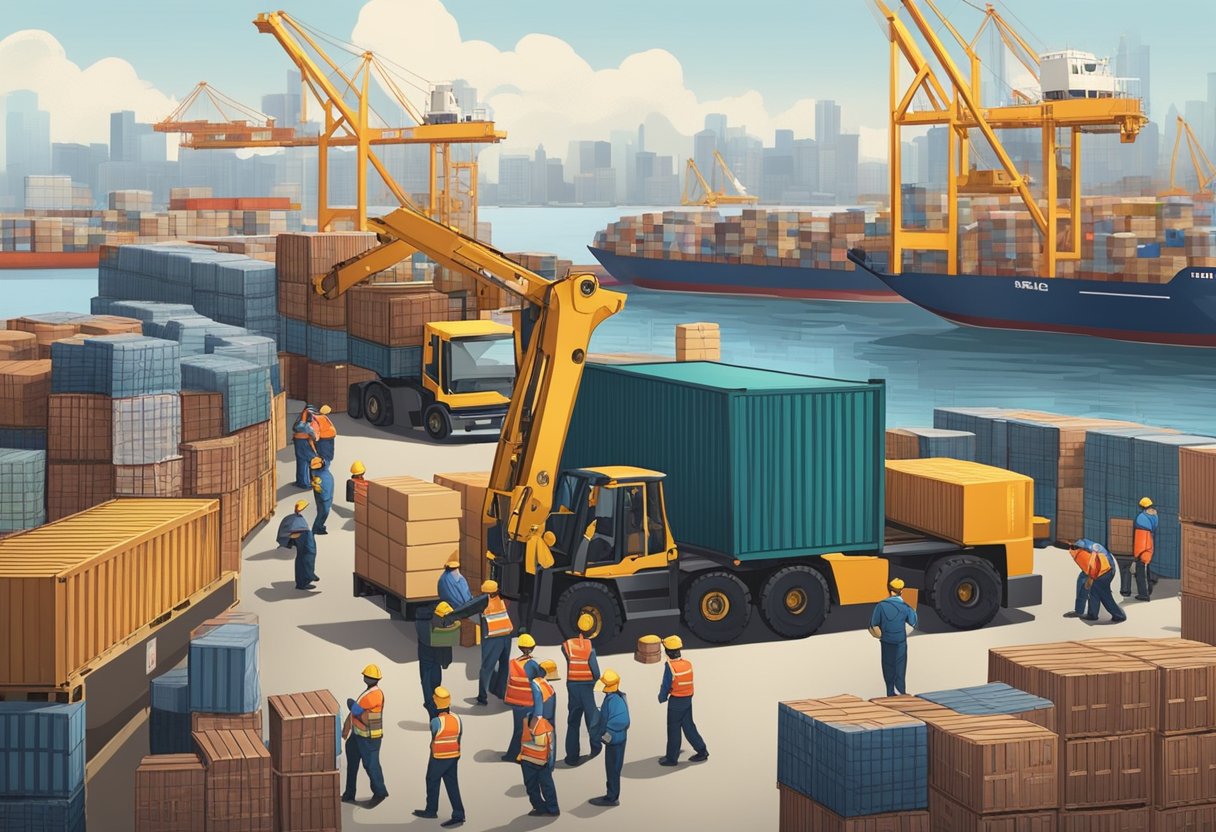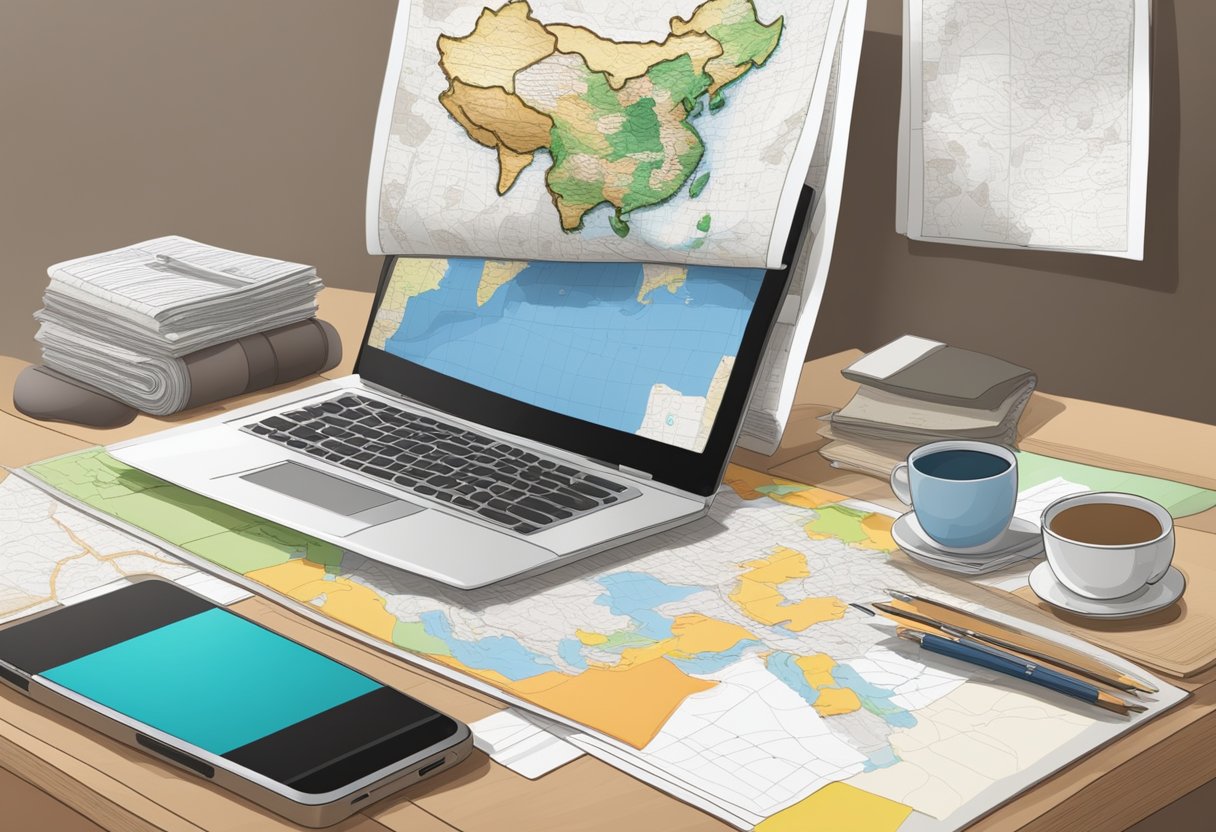Importing fabric from China has long been a strategic move for businesses around the world looking to leverage China’s extensive manufacturing capabilities. The nation is renowned for its ability to mass-produce a vast array of high-quality textiles at competitive prices. Accessing this market can significantly benefit companies by offering a diversity of textiles not commonly available elsewhere, providing both a cost advantage and distinctive product options.

But navigating the process to import fabrics from China involves understanding the nuances of international trade, including logistical considerations and regulatory compliance. Importers must be well-acquainted with the rules and regulations that govern trade between their home country and China, which includes customs duties, quality checks, and necessary documentation.
Companies considering importing from the Chinese fabric market should prepare to engage with suppliers, freight forwarders, and customs agents. Establishing clear communication channels can help troubleshoot any language barriers and refine the particulars around the types of fabrics, shipping costs, and timelines. For a successful import process, detailed planning and a comprehensive grasp of the importation steps are crucial.
Understanding the Basics of Importing from China
Importing fabric from China requires a deep understanding of the market structure, identifying reliable manufacturing partners, and comprehending the intricacies of the country’s trade policies. These key areas of focus are critical for successful import operations.
Identifying Reputable Suppliers and Manufacturers
To ensure quality and reliability in your fabric imports, it is imperative to identify reputable suppliers and manufacturers. Kinghan Textile is an example of a well-established company known for its quality control. When vetting potential suppliers, look for indicators such as previous customer testimonials, certifications, and the willingness to provide samples.
It’s advisable to conduct a thorough due diligence process which may include visiting the factories, if possible. Additionally, engaging with trade shows or employing sourcing agents on the ground in China can aid in finding trustworthy manufacturers who can fulfill your specific fabric requirements.
The Importance of Understanding China’s Trade Relations
The successful importation from China also hinges on a solid comprehension of the nation’s trade relations. Trade agreements and policies can significantly impact import duties, tariffs, and the overall ease of doing business with China.
Monitoring the current state of trade relations provides insight into potential future changes in the market. Staying abreast of updates concerning trade policies can aid businesses in avoiding unexpected costs and delays. Retrofitting your import strategy in line with these dynamics is key to maintaining a competitive edge in fabric sourcing from China.
Decoding Trade Regulations and Compliance
https://www.youtube.com/watch?v=maurNkILY5s&embed=true
When importing fabric from China, importers must be well-versed in the intricacies of trade regulations and remain compliant with all applicable safety standards. This involves navigating a complex landscape of duties and tariffs, fulfilling stringent compliance requirements, and understanding the relevant documentation and coding systems.
Navigating Import Duties and Tariffs
Importers must be informed about the various duties and tariffs that apply to fabric imports from China. These financial obligations are influenced by the type of fabric and the current trade policies, such as the application of Section 301 tariffs on certain Chinese goods. Government agencies, including the U.S. Customs and Border Protection (CBP), enforce these tariffs, and importers need to calculate their potential impact on cost.
Adherence to Compliance and Safety Regulations
Compliance with safety regulations is critical. Imported fabrics must meet specific flammability requirements and labeling requirements as per the Consumer Product Safety Improvement Act (CPSIA). Additionally, importers may need to demonstrate compliance with Business Social Compliance Initiative (BSCI) and Sedex Members Ethical Trade Audit (SMETA) to ensure ethical practices in the supply chain.
Customs Bond and Harmonized Tariff Schedule (HTS)
Obtaining a customs bond is compulsory for importers to guarantee that all duties and taxes will be paid. The Harmonized Tariff Schedule (HTS) is a standardized classification system for imported goods. It’s imperative for importers to correctly classify their fabric imports under the HTS to determine applicable tariffs and comply with regulations.
Pre-Importation Strategies
Before initiating fabric importation from China, importers should focus on rigorous assessment of quality and design, shrewd price and quantity negotiations, and meticulous planning for packing and shipping. Adhering to these strategies can significantly enhance the value and efficiency of the importing process.
Evaluating Fabric Quality and Design
When sourcing fabrics like lace, wool, cotton, linen, nylon, denim, and other specialty textiles, it’s crucial to assess their quality and design. Buyers should request samples to confirm the fabric meets the strict standards required for their fashion, clothing, or home textile lines. Attention to the composition and country of origin details is essential for ensuring that the fabrics align with the brand’s quality expectations and the target market’s preferences.
Price Negotiation and Minimum Order Quantity
Negotiating price and determining the Minimum Order Quantity (MOQ) are key pre-importation tasks. Importers must understand the balance between cost efficiency and inventory management:
- Price: Aim for a price that reflects the fabric’s quality, including factors such as the material’s composition and the complexity of the design.
- MOQ: Negotiate a MOQ that covers your sales projections but doesn’t lead to excessive overstock. For custom designs such as king fabric or special sport textiles, MOQs may be higher.
Packing and Labeling for International Shipping
Proper packaging and labeling are vital to protect the fabric during transit and to comply with international shipping regulations:
- Packaging: Ensure the packaging guards against moisture, dirt, and damage. Fabrics should be rolled on tubes, covered securely, and boxed if necessary.
- Labels: Accurate labeling, including composition, country of origin, and care instructions, are mandatory. Labels should adhere to the destination country’s import regulations to avoid customs issues.
Logistics and Shipping
Logistics and shipping are critical components when importing fabric from China. Understanding the nuances of transport methods, navigating customs efficiently, and complying with international shipping regulations are essential to ensure a smooth import process.
Choosing the Appropriate Shipping Method
For importing fabric from China, one has to decide between speed and cost. Air freight is faster but significantly more expensive than sea freight. The larger the shipment, the more one can save by choosing sea freight. However, small to medium shipments may benefit from the quicker turnaround of air freight.
Working with Customs Brokers
Engaging with experienced customs brokers is crucial for importing into regions such as the USA, Europe, India, or the Middle East. These professionals facilitate the clearance process, ensuring that all necessary documentation is accurate and submitted in a timely manner. Customs brokers have the expertise to navigate North America’s complex import duties and tax regulations, making them a valuable asset in the logistic chain.
Understanding REACH and Other Shipping Regulations
REACH, a regulation of the European Union, stands for Registration, Evaluation, Authorisation, and Restriction of Chemicals. It addresses the production and use of chemical substances and their potential impacts on both human health and the environment. When importing fabric to Europe, it is imperative that all products comply with REACH standards. Similarly, various regulations specific to other regions, such as the Consumer Product Safety Improvement Act (CPSIA) in the USA, must be adhered to. Non-compliance can lead to costly delays and fines, emphasizing the need for diligent regulation research and adherence.
Finalizing the Import Process
Finalizing the import process involves meticulous attention to shipment details, inventory management strategies, and financial oversight. Each step is crucial to ensure a smooth transition from receiving imported fabrics to integrating them into the market.
Receiving and Inspecting the Shipment
Upon the arrival of the fabric shipment, it is imperative that the purchasing manager conducts a thorough inspection. This initial check ensures the fabrics meet the specified quality standards and match the purchase order. They should confirm the quantity and quality of fabric from fabric manufacturers like Longda Textile or TPC Textile and report any discrepancies immediately.
Inventory Management and Sales Strategy
Effective inventory management is key to a shop’s operational efficiency. The clothing importer must update their inventory records to reflect the new stock. Developing a robust sales strategy, which may involve platforms like DHgate or other wholesale marketplaces, helps in capitalizing on the new imports and maintaining profitability.
Calculating Taxes, Fees, and Profit Margins
A critical step in the import process is calculating applicable customs duty and taxes. Businesses must be aware of the fees when importing clothes from China to ascertain their profit margins accurately. Clothiers need to be clear on the costs involved, such as those at Wenzhou Hengji Packing Co, to price their items competitively while ensuring profitability.


